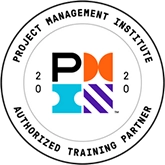By Phil Vincent, PMP, CBAP
Why Scope Definition Matters
Many projects fail or experience scope creep because the scope wasn’t clearly defined from the start. Business analysts often jump into requirements before everyone agrees on what the system will actually deliver.
A project manager’s Work Breakdown Structure (WBS) might list deliverables like documentation, design, or training, but it doesn’t describe what the system must do. That’s where the business analyst’s role comes in:
- Who will use the system?
- What tasks must it perform?
- What data will it handle?
Tools for Defining Scope
Business analysts can use two key tools to define and communicate scope early:
1. Context Diagrams
Context diagrams show the system’s boundaries, external actors (users or systems), and the data that flows between them. This high-level view helps clarify what is inside and outside of scope.
2. Use Case Models
Use case models describe how users (actors) interact with the system and the services it provides. Detailed use case specifications then define business rules, data needs, and processing steps — all of which shape accurate functional requirements.
Gaining Stakeholder Alignment
Defining project scope isn’t only a technical task — it’s also about communication and agreement. Business analysts should:
- Identify the right stakeholders who can make decisions.
- Present clear, visual models of the proposed scope.
- Gain formal approval before moving to detailed requirements.
Once the scope is agreed upon, the project team can confidently develop detailed requirements, reducing rework and the risk of costly changes later.
Key Takeaway
Effective scope definition helps business analysts set clear boundaries, manage stakeholder expectations, and prevent scope creep. Using tools like context diagrams and use case models gives everyone a shared understanding of what success looks like — leading to more predictable, successful project outcomes.
About the Author
Phil Vincent, PMP® CBAP®, Certified ScrumMaster and Certified Rational Solution Designer, is a Senior Consultant and Trainer for Corporate Education Group. Phil offers a wealth of experience and a passion for teaching, coaching and mentoring and is an expert in all aspects of the software development lifecycle, especially business analysis and project management.


